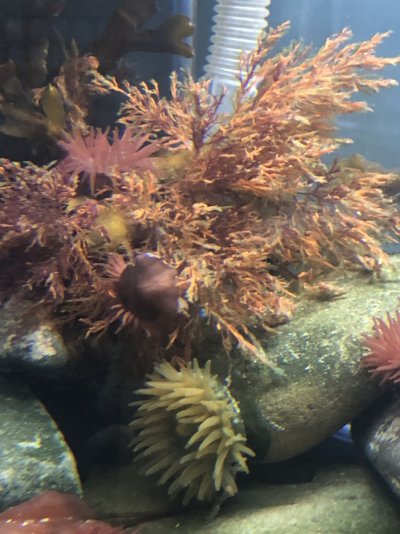Went out today and got some limpets and made some cubes . The native fish love them and the hermits and prawns



Navigation
Install the app
How to install the app on iOS
Follow along with the video below to see how to install our site as a web app on your home screen.
Note: This feature may not be available in some browsers.
More options
You are using an out of date browser. It may not display this or other websites correctly.
You should upgrade or use an alternative browser.
You should upgrade or use an alternative browser.
ROCK POOL REEF KEEPERS GROUP
- Thread starter Nano_Man
- Start date
- Tagged users None
kevgib67
7500 Club Member
View Badges
Hospitality Award
Midwest Reefer
Rock Pool Reef Keepers
Ohio Reefer
My Tank Thread
My Aquarium Showcase
You’ve got the market cornered in limpits!Went out today and got some limpets and made some cubes . The native fish love them and the hermits and prawns


Merry Christmas everyone and the moderators

kevgib67
7500 Club Member
View Badges
Hospitality Award
Midwest Reefer
Rock Pool Reef Keepers
Ohio Reefer
My Tank Thread
My Aquarium Showcase
Merry Christmas!Merry Christmas everyone and the moderators
@Subsea he is your man on seaweed and. Everything in native and Natural environment set ups he has helped me out a few times great guy and he might show you his tank of sponges stunning and naturalI’m a lover of books so I can’t help myself, I’ll start off the new year with this. Have any of y’all read it? Love to hear your thoughts, criticisms, and additions!
I will check it out. I am more familiar with North Atlantic cold water ecosystems on the Maine Coast.I’m a lover of books so I can’t help myself, I’ll start off the new year with this. Have any of y’all read it? Love to hear your thoughts, criticisms, and additions!
@907johnfish
Would you provide a link for book. It did not come up on Amazon search.
Also, show us your sponges. I have a fetish for SpongeBob.
Last edited:
tide pool ecosystem:
A single tide pool contains many food chains. Algae and other plants are eaten by plant-eating zooplankton; this plankton is eaten by larger, carnivorous plankton; these are eaten by a mussel, barnacle or other marine invertebrate; the mussel is then eaten by an ochre star, which may be eaten by a gull or a sea otter.
 experienceolympic.com
experienceolympic.com
Unlike the Atlantic Coast or Gulf of Mexico, the Pacific Coast and Salish Sea is in a sweet spot for intertidal diversity that includes sponges, sea anemones, marine worms, mollucks (chitons, limpets, marine snails, nudibraches
A single tide pool contains many food chains. Algae and other plants are eaten by plant-eating zooplankton; this plankton is eaten by larger, carnivorous plankton; these are eaten by a mussel, barnacle or other marine invertebrate; the mussel is then eaten by an ochre star, which may be eaten by a gull or a sea otter.
Pacific Northwest Tide Pool Tours are a Favorite Family Treat from April to August
Pacific Northwest tide pool tours offer amazing opportunities for guided low tide exploration. Your naturalist guide wants to introduce you to amazing tide pool creatures on your Pacific Northwest tide pool tour.
Unlike the Atlantic Coast or Gulf of Mexico, the Pacific Coast and Salish Sea is in a sweet spot for intertidal diversity that includes sponges, sea anemones, marine worms, mollucks (chitons, limpets, marine snails, nudibraches
Here’s the link for ya!I will check it out. I am more familiar with North Atlantic cold water ecosystems on the Maine Coast.
@907johnfish
Would you provide a link for book. It did not come up on Amazon search.
Also, show us your sponges. I have a fetish for SpongeBob.
I unfortunately don’t have any sponges. That would be amazing though!
We’re on opposite sides I live in the very North Pacific
Happy New year to all the members
Big welcome to @Reef Devils


Out today not much happening a scallop on its last legs and a bye valve couple of anemones





Welcome. @fishface NJ New Member
Here's some more












kevgib67
7500 Club Member
View Badges
Hospitality Award
Midwest Reefer
Rock Pool Reef Keepers
Ohio Reefer
My Tank Thread
My Aquarium Showcase
I think the only thing your tank is missing is some anemones and blue damsels just to make it perfect!Here's some more











Projects with Sam
5000 Club Member
View BadgesPartner Member 2024
Hospitality Award
Midwest Reefer
Rock Pool Reef Keepers
My Tank Thread
My Aquarium Showcase

The Atlantic coast is a bust. Here is directly across from Boynton inlet to the Atlantic. Just teaming with asphalt and concrete debris, broken glass, and whatever paraphernalia was left behind.tide pool ecosystem:
A single tide pool contains many food chains. Algae and other plants are eaten by plant-eating zooplankton; this plankton is eaten by larger, carnivorous plankton; these are eaten by a mussel, barnacle or other marine invertebrate; the mussel is then eaten by an ochre star, which may be eaten by a gull or a sea otter.
Pacific Northwest Tide Pool Tours are a Favorite Family Treat from April to August
Pacific Northwest tide pool tours offer amazing opportunities for guided low tide exploration. Your naturalist guide wants to introduce you to amazing tide pool creatures on your Pacific Northwest tide pool tour.experienceolympic.com
Unlike the Atlantic Coast or Gulf of Mexico, the Pacific Coast and Salish Sea is in a sweet spot for intertidal diversity that includes sponges, sea anemones, marine worms, mollucks (chitons, limpets, marine snails, nudibraches
Some critters collected are dwarf planaxis, blue leg hermit, porcelain crab, amphipod, nerite.
It is interesting to me to see the progression of the blue leg hermit crabs. The smallest shell I have found them in is the dwarf Planaxis. From there they move out of the tiny house into a Cerith shell or other shell in size range. I do not know the life cycle of the crab or at what stage or how the first shell becomes acquired. Read some studies, either couldn’t find info or didn’t understand it.
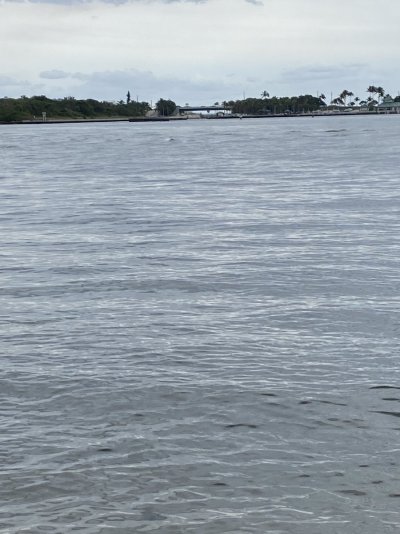
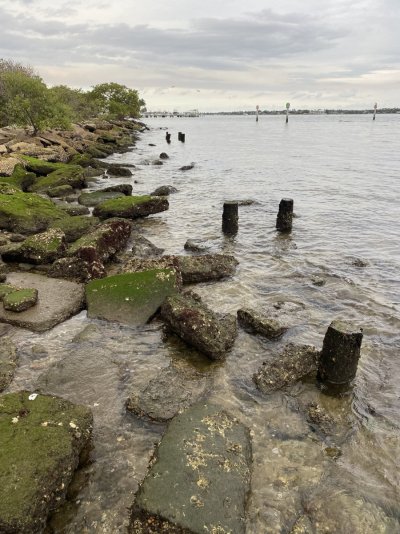
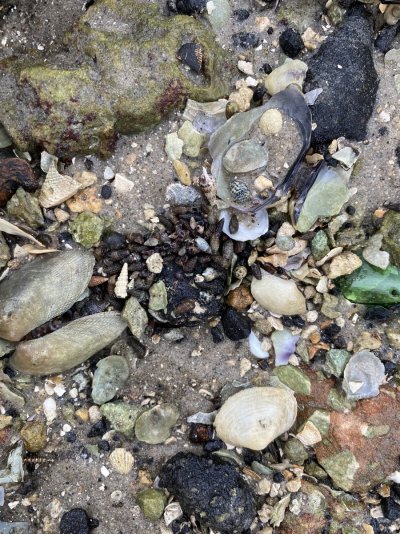
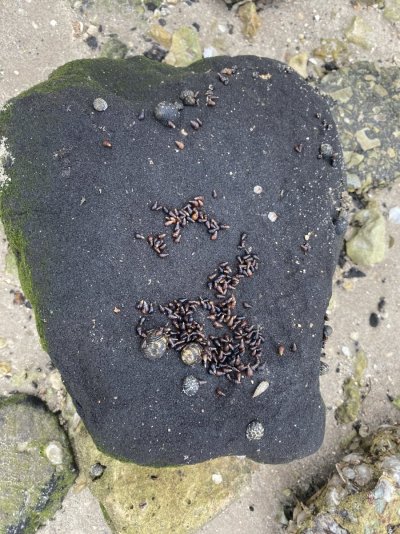
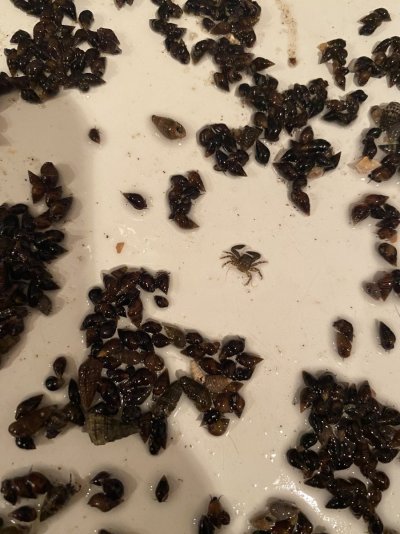
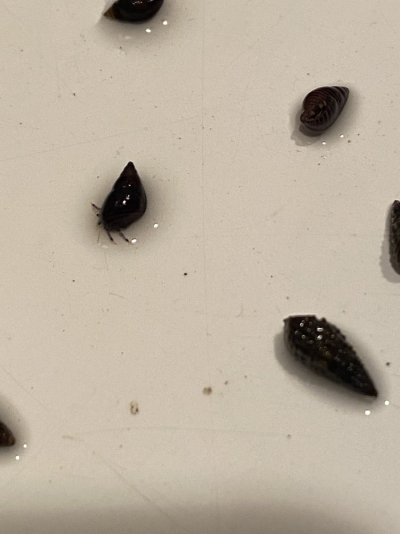
They are tiny but you can not complainThe Atlantic coast is a bust. Here is directly across from Boynton inlet to the Atlantic. Just teaming with asphalt and concrete debris, broken glass, and whatever paraphernalia was left behind.
Some critters collected are dwarf planaxis, blue leg hermit, porcelain crab, amphipod, nerite.
It is interesting to me to see the progression of the blue leg hermit crabs. The smallest shell I have found them in is the dwarf Planaxis. From there they move out of the tiny house into a Cerith shell or other shell in size range. I do not know the life cycle of the crab or at what stage or how the first shell becomes acquired. Read some studies, either couldn’t find info or didn’t understand it.






I got some cold water common hermits and slowly raised there temp upto 25c and introduce them to the tropical tank they are doing fine apart from the Blennys try and eat them
Similar threads
-
- Poll
- Replies
- 38
- Views
- 1,296
- Poll
- Replies
- 25
- Views
- 950








